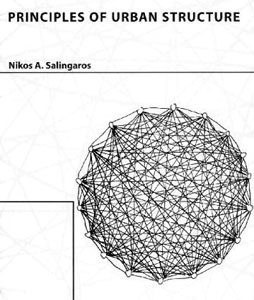by Nikos A. Salingaros
Techne Press, Amsterdam, Holland: 252 pages.
This monograph introduces the unifying notion of the network city to understand urban phenomena as components of a complex system, using concepts such as “fractal loading” and the brain-computer analogy. Scientific principles underlying urban form surprisingly support traditional concepts of urban planning. “Urban coherence” links competing mechanisms and nodes of a complex city into a working whole. This book explains to professional urbanists, students, and government planners why traditional cities are successful, based on their evolved form, components, and complex substructure.

This book explains how cities actually work. It will serve as a guide and inspiration for planners to re-humanize our cities using the latest technologies and recent understanding from science and mathematics.
The dogma of mainstream urbanism cannot cope with the changes in technology, culture and science of the last decades. The heritage we are left with is an overly asphalted and sterile concrete environment. Therefore this book addresses the needs of professional urbanists, students and teachers, who wish to understand how and why cities are successful or not, depending on their form, components, and substructure. Most of the needs are related to the urgent search for new instruments of urban planning and design, to which this book contributes conceptually by showing how to connect the fractal city on multiple levels.
There is an increasing awareness that a city needs to be understood as a complex interacting system. Different types of urban systems overlap to build up urban complexity in a living city. This raises the need for using concepts such as coherence, emergence, information, self-organization and adaptivity. This book relates these concepts to the city, shows how to operationalize them, and hopefully marks the beginnings of an urban science.